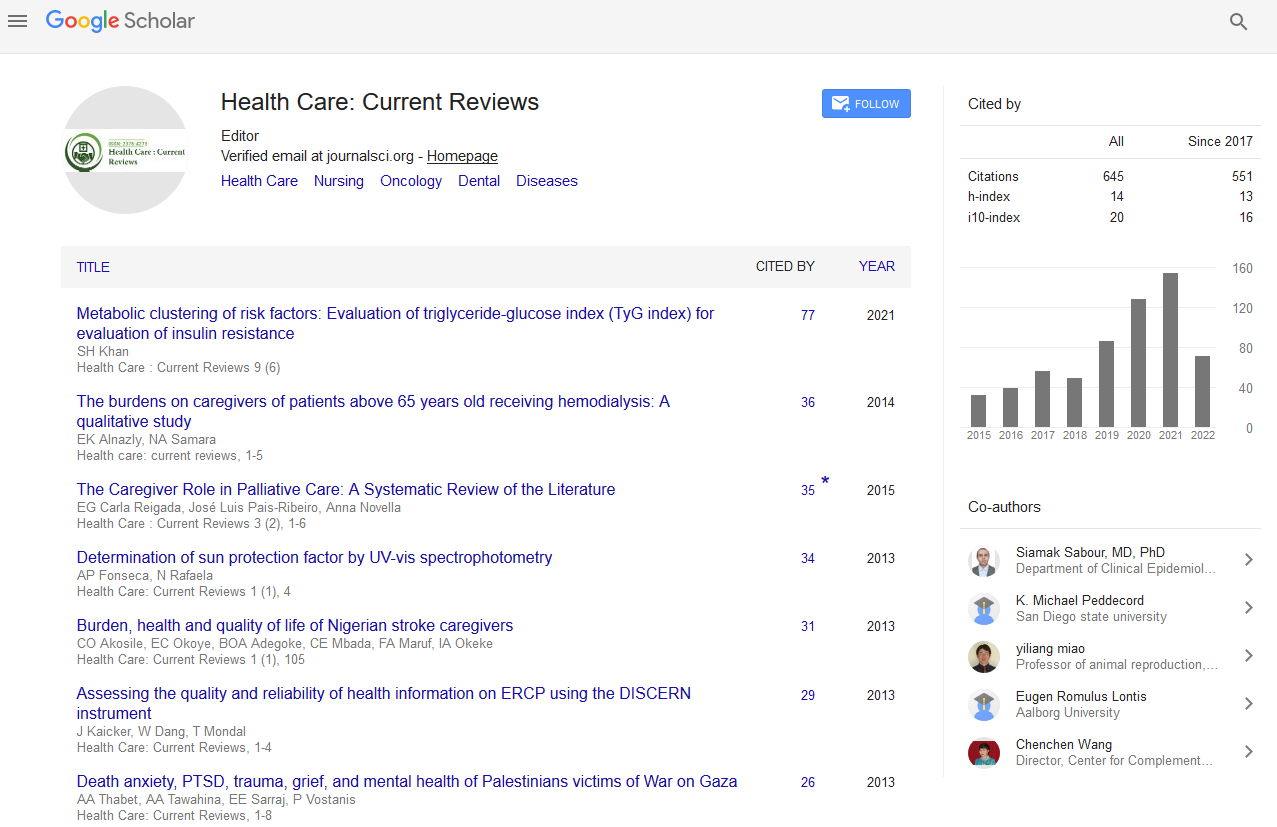PMC/PubMed Indexed Articles
Indexed In
- Open J Gate
- Academic Keys
- RefSeek
- Hamdard University
- EBSCO A-Z
- Publons
- Geneva Foundation for Medical Education and Research
- Google Scholar
Useful Links
Share This Page
Journal Flyer

Open Access Journals
- Agri and Aquaculture
- Biochemistry
- Bioinformatics & Systems Biology
- Business & Management
- Chemistry
- Clinical Sciences
- Engineering
- Food & Nutrition
- General Science
- Genetics & Molecular Biology
- Immunology & Microbiology
- Medical Sciences
- Neuroscience & Psychology
- Nursing & Health Care
- Pharmaceutical Sciences
The prevalence of Hymenolepis nana among preschool children of displacement communities in Khartoum state, Sudan: A cross-sectional study
4th Asia-Pacific Global Summit & Expo on Healthcare
July 18-20, 2016 Brisbane, Australia
Ibrahim A Eljack, Muzamil Mahdi Abdel Hamid, Mohammad Khatim M Osman, Arwa Hassan Elaagip and Mohamed S Muneer
Al-Baha University, Saudi Arabia
University of Khartoum, Sudan
Posters & Accepted Abstracts: Health Care Current Reviews
Abstract:
Background: Hymenolepis nana is among the most common intestinal parasitic infections causing a public health threat in poor communities in Sub-Saharan Africa. Aim: The present study was conducted to determine the prevalence of H. nana infections and associated risk factors among preschool children of displacement communities in Khartoum state, Sudan. Methods: A cross-sectional survey was conducted in May 2013 in displacement camps, Khartoum state, Sudan. A simple random sample of preschool children from the displacement camps, aged between 1 to 5 years, was included. Information was collected by presenting a questionnaire and taking 500 fresh stool specimens, which were examined microscopically for the presence of eggs, using direct saline and formol-ether concentration techniques. Results: The prevalence of H. nana was determined to be 32.6% (163/500), 95% CI (28.5% e36.9%). Infections of H. nana were more prevalent among males than females, and this association was statistically significant (P<0.001, OR Z 2.125, 95% CI Z 1.452e3.108). H. nana infections were significantly prevalent among the older age group (2.6e5.0 years) (P<0.001, OR Z 2.909, 95% CI Z 1.914e4.420). Approximately 76.7% of infected preschool children had diarrhea and it was significantly associated with H. nana infection (P<0.001, OR Z 9.45, 95% CI Z 6.10e14.64). None of the preschool children had access to a clean water supply. No significant association was found between use of latrines and infections of H. nana (P Z 0.56, OR Z 0.880, 95% CI Z 0.73e1.763). Conclusions: There was a high prevalence rate of H. nana infection among preschool children of displacement camps in Khartoum state, Sudan. Being male, aged between 2.6 and 5.0 years, and having diarrhea were identified as important risk factors for H. nana infection. Measures including health education, environmental hygiene, water supply and treatment should be taken into account to reduce the high prevalence of H. nana.
Biography :
Ibrahim A Eljack is Assistant Professor of Family and Community Medicine, Al-Baha University Faculty of Medicine, Saudi Arabia. He was the Director of Department of Organizations and Voluntary Agencies, Khartoum State Ministry of Health, Sudan during 2012- August 2013. He was also the Director of Planning Department and Deputy Director of Primary Health Care General Directorate, Khartoum State Ministry of Health, Sudan, responsible for planning, quality management, researches, training and monitoring and evaluation activities for the primary health care in Khartoum State, Ministry of Health, 2008-2012.
Email: aljack123@yahoo.com


